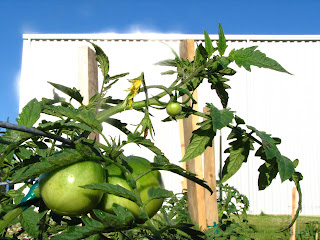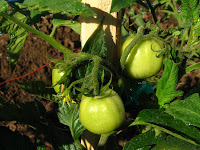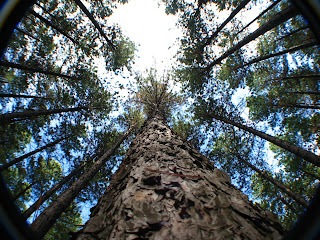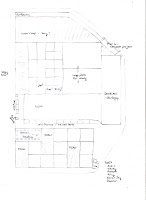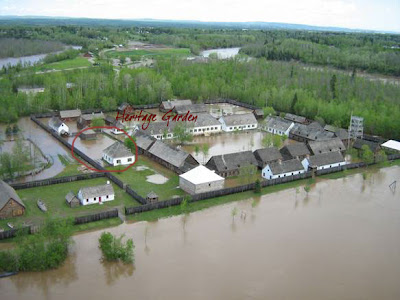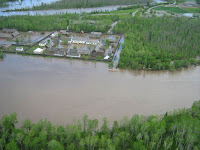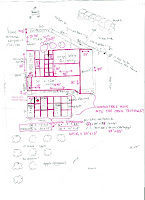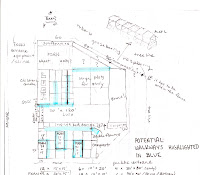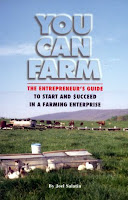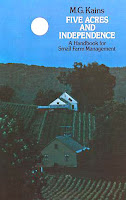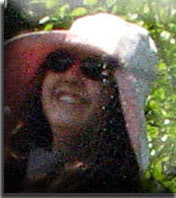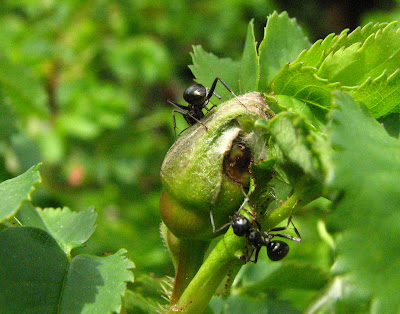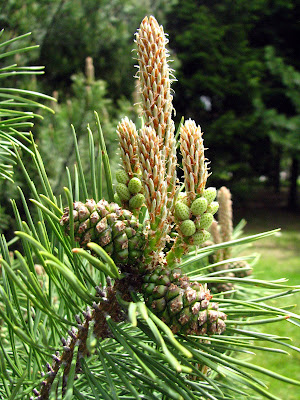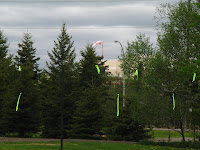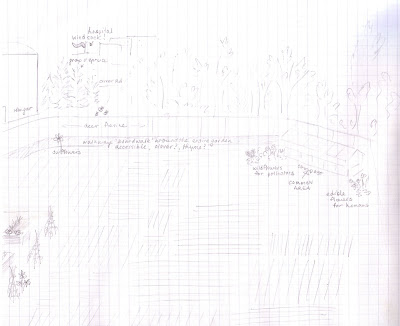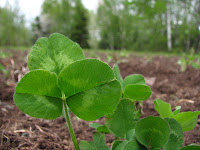“Why do the pansies all look so crappy this year?” she asked, in a tone I didn’t like. I stood there, staring into the brightest sun all the while being pummeled with raindrops from the cloud that was more above me than her at that particular time. I looked up, shrugged – and walked back into my little greenhouse and got back to my work.
I thought of Boreal Edge Farm every time someone complained to me about their petunias being sticky, while my own hands were so sticky from the stupid greenhouse petunias and cleaning all the stupid petunia baskets, sorry – did I say ‘stupid’, I meant ‘sticky’. Both times. I came to peace with geraniums, I have yet to come to peace with petunias. I’d rather use those tables for pumpkins.
Dennis called me pumpkin all day Sunday, a reminder to not forget pumpkins for me to take home, so Hannah can share them with classmates, as it seems it has become our tradition. She also has a flat of snapdragons for those who don’t have the patience for pumpkins. We’ll pot those tomorrow, deliver Wednesday.
I’ve had mixed feelings over working River St. this year. Last weekend I arrived early like usual, to ride my bike around the parking lot of the 55+ Center, sipping coffee and thinking about the day ahead. I couldn’t imagine not having that experience each spring, now that I’ve had it. It’s about so many things, not just the exposure to plants, but people who know plants, people who don’t know plants, ignorant people like the one mentioned at the beginning of this story who care less about the big picture and more about what arrangement the latest magazine stand wisdom told them they're following this trendy garden season. Ahem. Pardon me.
In contrast to those who complain, there are those who change my life, my perspective, maybe just in some small seemingly insignificant comment – it does. It’s those who stand out. In numbers I think the crabby complainish types outnumber the ones who stand out, but I choose how I weigh my experiences, and tend to throw the ignorant off the scale.
One woman one day marveled at the lophospermum hanging above me, and while she paid for her containers and packs she said something similar to this:
Whenever I’m at a funeral, which I go to many these days, - and I’m not particularly religious- so I don’t believe in heaven or some wonderful place beyond here…but whenever the minister says “so and so is off to a better place, a glorious place…” I want to jump up and yell: look around you! Look at those incredible plants and how beautiful it all is, everything in here. People don’t stop to see what’s right here, what’s glorious here.
I paraphrase. She went on, she said some great things, sad things – I felt moved after our brief conversation. I couldn’t have agreed with her more. These kinds of conversations are difficult to translate. I’ve been trying to put years of experiences into written word and have yet to find the right voice.
Near Saturday’s greenhouse end I was stopped by a woman asking about hanging baskets. After answering her, she said,
Are you Amy? I nodded, and immediately she said
You knew my father. He talked about you often….I knew right away she was
Nick’s daughter. I felt as chocked up at the time as I do now recalling it. We talked back an forth passionately about her father and what he meant to that greenhouse. He was a fixture, working at Grandview Mall just down the way, Nick and I saw each other almost every day. Whether at the greenhouse taking about trees and plants, or with him opening the door for me at the mall, something made me feel very paternal towards Nick.
Shortly after I moved away from the neighborhood, and the greenhouse season had ended that year, Nick became ill. That's the problem with seasonal work: only seeing people seasonally. Anything can happen in between.
I was standing at the counter at River St. one day last season with a line up of eager gardeners to tend to. I looked up to a voice asking “Do you recognize me? Do you know who I am?” I blinked in confusion, knowing the voice, not recognizing who it was coming from…It was Nick. Cancer had taken him. I knew him but didn’t, and it was heartbreaking. That huge line of gardeners were all silent - those who saw my reaction and heard; I couldn’t help but cry while I worked for a while after that. That moment with Nick was brief; it was my last.
The morning of his funeral I rode across town on my bike, from Moodie to St. Anthony’s overlooking my Sleepy G. It was a beautiful day. Blue skies, the odd fluffy cloud, warm. I rode through the campus, past my own father’s resting place (dinging my bell for him as I pass by), and listening to
Fidelity on my ipod on repeat all the way there. I remember it clearly. Tina told me her way there in the family’s limo was greeted by all the staff at Grandview standing outside as they passed. I wonder how many others feel as fondly as I do.
I know especially well how often my father is remembered. By holding an office one floor above the Math department; people see my name on the door and ask: Are you related to the math professor? Followed by a story of how he’s remembered. He would be pleased. I remember his office for the chalkboard, and running my hands along the cinderblock walls while I traveled down the corridors. I still do that now and then – and wonder if Euan, Simone, Talia, Rhyss and Theo, Sean and Mark, Zack and Zoe, or new Simon will do it too.
It makes me wonder about all fathers who are remembered on father’s day by people who aren’t their children, but feel that their fatherly friendship was special.
My mother has been researching her family tree and it turns out my great grandfather was a Nick (story currently unfolding); an my great grandfather of my father’s side was a gardener for the city of Utrecht.
The influences and memories of many father’s, and family’s and stories and personal confessions made at the greenhouse – it’s in these experiences I absorb the most pleasure at this time of year. I love planting season for what it is, and selling season only (wellll, mostly) for these moments.
Gerardus Vervoort
Math professor, bee keeper, chicken farmer, my Dad













